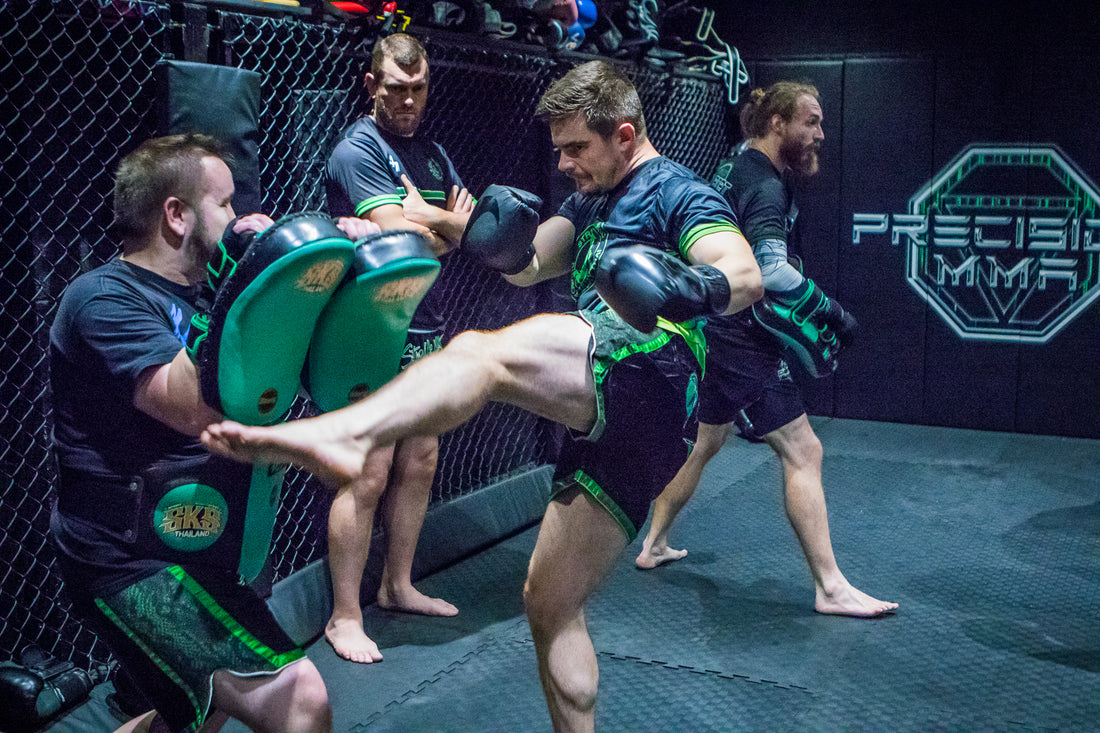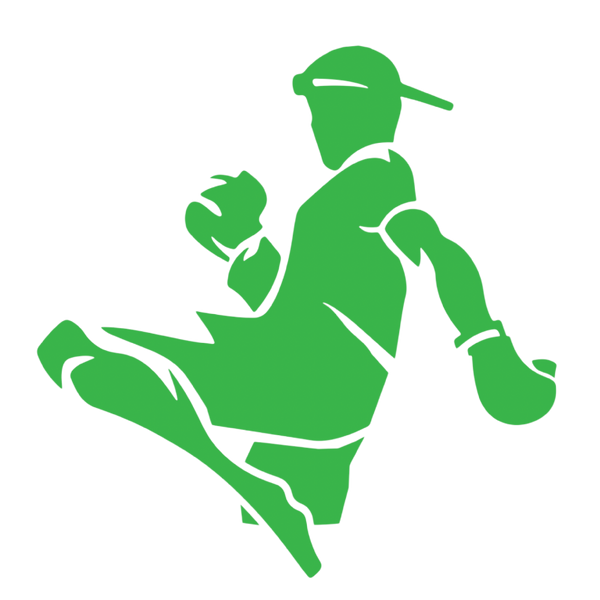
Striking 101: The Complete Guide
Share
Fundamentals of K1 Strikes
K1 kickboxing is a popular combat sport that involves striking techniques from various martial arts, including boxing, karate, Muay Thai, and Taekwondo. In K1 kickboxing, there are ten different types of strikes that fighters can use to attack their opponents. In this section, we will discuss the fundamentals of K1 strikes, including punches, kicks, knee strikes, elbow strikes, and more.
Punches
In K1 Kickboxing, punches are an essential part of the arsenal. They are used to score points, wear down the opponent, and even knock them out. Here are the different types of punches used in K1 Kickboxing:
1: Jab
The jab is a quick, straight punch thrown with the lead hand. It is used to set up other punches, keep the opponent at bay, and score points. The jab should be thrown with the shoulder and elbow kept in line with the fist. It should be quick and snappy, and the arm should be brought back quickly to guard the face.
2: Cross
The cross is a powerful punch thrown with the rear hand. It is used to knock out opponents, score points, and wear down the opponent. The cross should be thrown with the shoulder and hip rotating to generate power. The arm should be straight, and the fist should be turned over at the end of the punch. The opposite hand should be kept up to guard the face.
3: Lead Hook
The lead hook is a punch thrown with the lead hand in a circular motion. It is used to score points, set up other punches, and knock out opponents. The lead hook should be thrown with the elbow kept up and the fist turned over at the end of the punch. The opposite hand should be kept up to guard the face.
4: Rear Hook
The rear hook is a punch thrown with the rear hand in a circular motion. It is used to knock out opponents, score points, and wear down the opponent. The rear hook should be thrown with the shoulder and hip rotating to generate power. The elbow should be kept up, and the fist should be turned over at the end of the punch. The opposite hand should be kept up to guard the face.
5: Lead Uppercut
The lead uppercut is a punch thrown with the lead hand in an upward motion. It is used to knock out opponents, score points, and set up other punches. The lead uppercut should be thrown with the shoulder and hip rotating to generate power. The elbow should be kept in and the fist should be turned over at the end of the punch. The opposite hand should be kept up to guard the face.
6: Rear Uppercut
The rear uppercut is a punch thrown with the rear hand in an upward motion. It is used to knock out opponents, score points, and wear down the opponent. The rear uppercut should be thrown with the shoulder and hip rotating to generate power. The elbow should be kept in, and the fist should be turned over at the end of the punch. The opposite hand should be kept up to guard the face.
7: Lead Bodyshot
The lead bodyshot is a punch thrown with the lead hand to the body. It is used to wear down the opponent, score points, and set up other punches. The lead bodyshot should be thrown with the elbow kept in and the fist turned over at the end of the punch. The opposite hand should be kept up to guard the face.
8: Rear Bodyshot
The rear bodyshot is a punch thrown with the rear hand to the body. It is used to wear down the opponent, score points, and knock out opponents. The rear bodyshot should be thrown with the shoulder and hip rotating to generate power. The elbow should be kept in, and the fist should be turned over at the end of the punch. The opposite hand should be kept up to guard the face.
9: Body Jab
The body jab is a quick, straight punch thrown with the lead hand to the body. It is used to set up other punches, score points, and wear down the opponent. The body jab should be thrown with the shoulder and elbow kept in line with the fist. It should be quick and snappy, and the arm should be brought back quickly to guard the face.
10: Body Cross
The body cross is a powerful punch thrown with the rear hand to the body. It is used to knock out opponents, score points, and wear down the opponent. The body cross should be thrown with the shoulder and hip rotating to generate power. The arm should be straight, and the fist should be turned over at the end of the punch. The opposite hand should be kept up to guard the face.
11: Superman Jab
The Superman Jab is a punch thrown while jumping forward. It is used to surprise the opponent, score points, and set up other punches. It should be thrown with the lead hand and the opposite hand should be kept up to guard the face.
12: Superman Punch
The Superman Punch is a punch thrown while jumping forward. It is used to knock out opponents, score points, and wear down the opponent. It should be thrown with the rear hand,
Kicks
Kicks are a crucial part of K1 kickboxing. They can be used to score points, weaken your opponent, or even knock them out. There are several types of kicks in K1 kickboxing that you need to be familiar with in order to be a successful fighter.
Low: Low Kick
The low kick is a powerful strike that targets your opponent's thigh. It can be used to weaken your opponent's leg, making it harder for them to move and strike effectively. To execute a low kick, pivot on your lead foot and swing your back leg towards your opponent's thigh.
Kick: Body Kick
The body kick is a versatile strike that can be aimed at your opponent's ribs, stomach or liver. It can be used to score points or even knock your opponent down. To execute a body kick, pivot on your lead foot and swing your back leg towards your opponent's midsection.
High: High Kick
The high kick is a flashy and powerful strike that targets your opponent's head or neck. It can be used to knock your opponent out or simply score points. To execute a high kick, pivot on your lead foot and swing your back leg towards your opponent's head.
Switch: Switch Kick
The switch kick is a deceptive strike that involves switching your stance mid-kick. It can be used to catch your opponent off-guard and score points or even knock them out. To execute a switch kick, start in your orthodox stance and switch to your southpaw stance mid-kick.
Knock: Pendulum Kick
The pendulum kick is a tricky strike that involves swinging your leg in a circular motion before striking your opponent. It can be used to knock your opponent down or simply score points. To execute a pendulum kick, swing your leg in a circular motion before striking your opponent with the ball of your foot.
Flick: Lead Karate Kick
The lead karate kick is a quick and precise strike that targets your opponent's head or neck. It can be used to score points or even knock your opponent out. To execute a lead karate kick, flick your lead leg towards your opponent's head or neck.
Teep: Rear Teep
The rear teep is a push kick that can be used to keep your opponent at bay or even knock them down. It involves pushing your opponent with the ball of your foot. To execute a rear teep, lift your rear leg and push your opponent with the ball of your foot.
Lead: Teep
The lead teep is similar to the rear teep, but it is executed with your lead leg. It can be used to keep your opponent at bay or even knock them down. To execute a lead teep, lift your lead leg and push your opponent with the ball of your foot.
Back Kick: Spinning Back Kick
The spinning back kick is a powerful strike that involves spinning around before striking your opponent with your heel. It can be used to knock your opponent out or simply score points. To execute a spinning back kick, spin around and strike your opponent with your heel.
Hook Kick: Spinning Hook Kick
The spinning hook kick is a flashy and powerful strike that involves spinning around before striking your opponent with the back of your heel. It can be used to knock your opponent out or simply score points. To execute a spinning hook kick, spin around and strike your opponent with the back of your heel.
Remember, kicks require strength and proper technique to execute effectively. Practice each kick with a trainer or partner to ensure you are executing them correctly and with maximum power.
Article created by Rise Online
